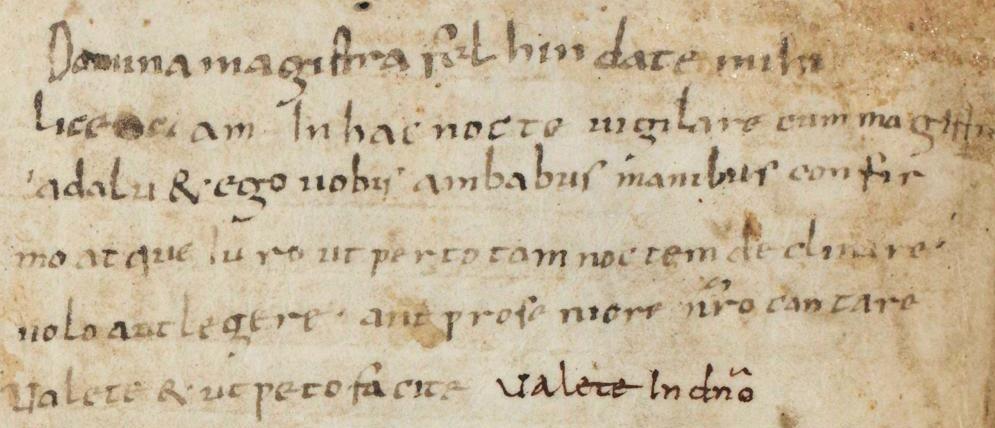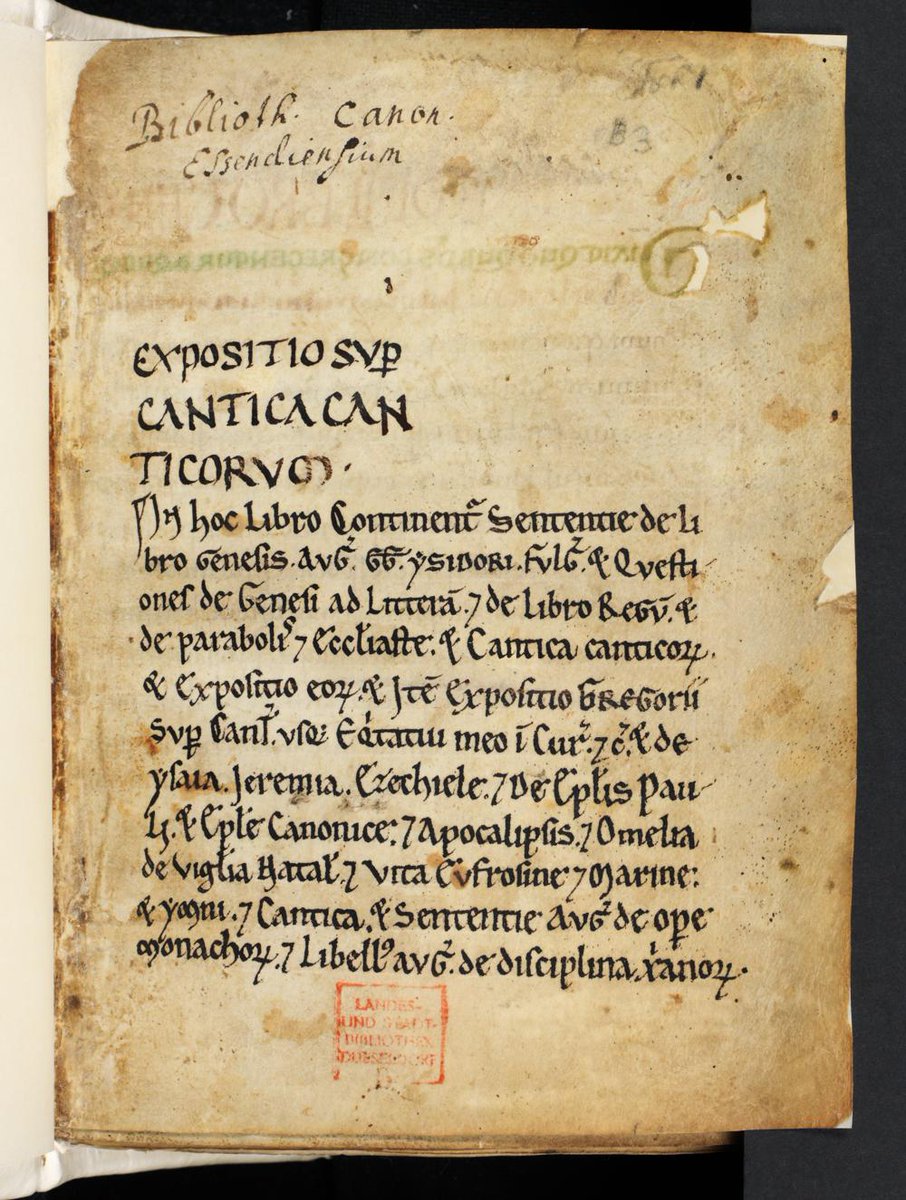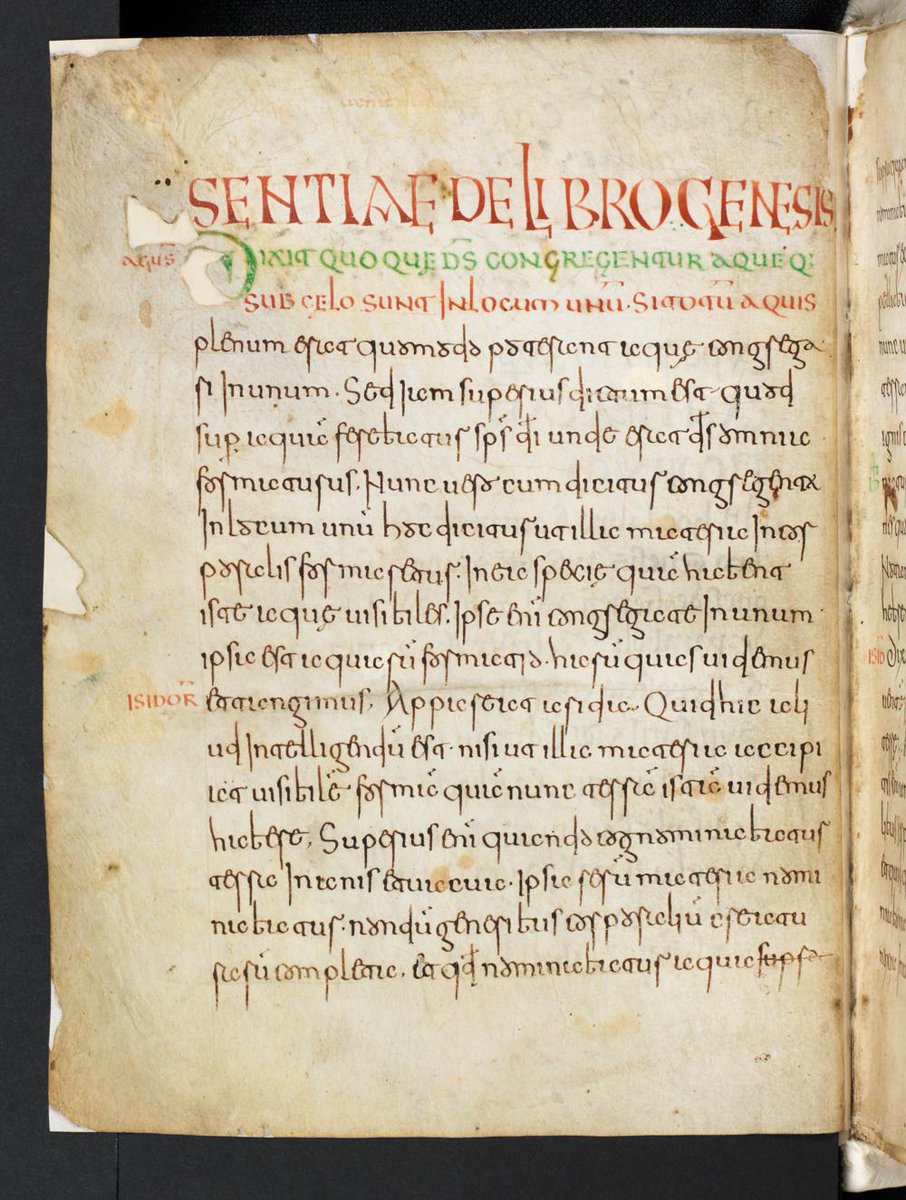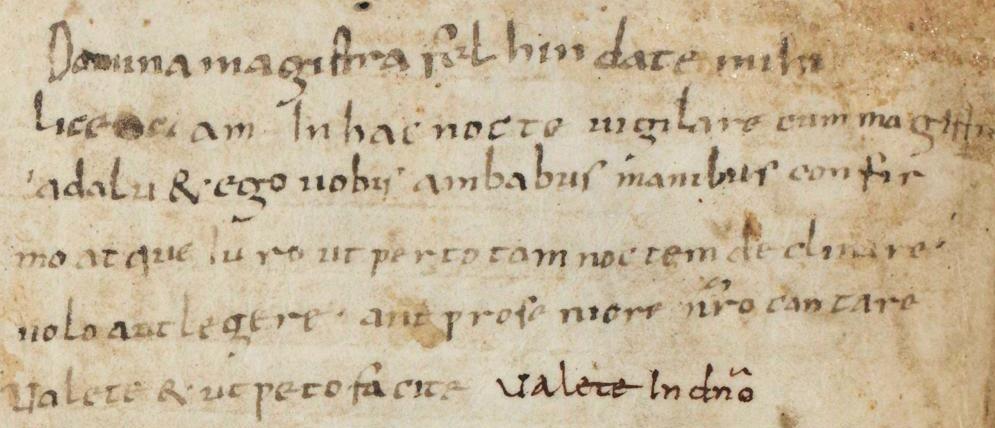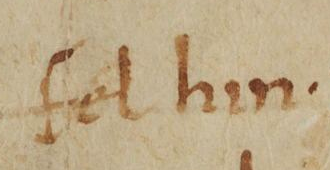Sometimes, when working with manuscripts we get really, really close to people from the past. This is a story of a letter from a schoolgirl to her teacher, written probably sometime in the last three decades of the 9th century. A thread #medieval #manuscripts /1
The manuscript in question, Düsseldorf B.3 is a collection of texts, written probably around 820 in Corbie in Northern France. It contains a number of works, ranging from Alcuin through Bede to hymns. It was perfect for school use. /2
(The table of contents pictured above is much later, 10th and 12th C. As a small digression: yes, medieval people used tables of contents) /3
Sometime around 860 it made its way to the newly founded monastery of secular canonesses in Essen where it was used as a school text for young girls, mostly (or almost exclusively) from aristocratic families. The contents of Düss. B.3 show that they received a broad education /4
At the very end of the codex we find a curious addition. It is a letter, from an anonymous schoolgirl, asking the headmistress to allow her to stay up with her teacher, Adalu. /5
"Mistress Felhin, give me leave to keep vigil this night with mistress Adalu, and I affirm and swear to you with both hands that I shall not cease either reading or singing on behalf of our Lord the whole night through. Farewell, and do as I ask." (transl. Stofferahn 1999) /5
Below the "lettter", in a different hand, we find an addition: "Valete in domino" - perhaps an answer from Felhin herself, granting permission? /6
Apart from being a touching window into a life of a late 9th century school it shows us a glimpse of the world of educated Early Medieval women. The authoress of the text remains anonymous, but both Felhin and Adalu are known to us from other sources, as far afield as St. Gall /7
We can relatively surely pinpoint their activity to the times of abbess Gerswith II. (864-878). Look, here is Felhin in the Düss. D.1, a Sacramentary, mentioned in the nomina vivorum of the Essen community. She was entered into the list probably shortly after 870. /8
Those were texts written by women, about women, and to women. They travelled, wrote, and read. They were connected well in the circles of power. A whole world of creativity and everyday life that we can now see thanks to the medieval manuscripts. /9
We still have so much to learn about the Early Medieval world! Most of the time our sources are not as striking and straightforward but the manuscripts really are a window to a whole world out there /FIN
Bibliography
MSS
Düss. D.1 https://bit.ly/2Z5klYA
Düss.">https://bit.ly/2Z5klYA&q... B.3 https://bit.ly/2P4m6jS
Sec.">https://bit.ly/2P4m6jS&q... Literature
Kahsnitz R. (1971) https://bit.ly/2P42cpx
Müller">https://bit.ly/2P42cpx&q... M. (2015) https://bit.ly/2IrMCCC
Stofferahn">https://bit.ly/2IrMCCC&q... S. (1999) https://bit.ly/2G7keDa
Stofferahn">https://bit.ly/2G7keDa&q... S. (2002) https://bit.ly/2GiWaP3 ">https://bit.ly/2GiWaP3&q...
MSS
Düss. D.1 https://bit.ly/2Z5klYA
Düss.">https://bit.ly/2Z5klYA&q... B.3 https://bit.ly/2P4m6jS
Sec.">https://bit.ly/2P4m6jS&q... Literature
Kahsnitz R. (1971) https://bit.ly/2P42cpx
Müller">https://bit.ly/2P42cpx&q... M. (2015) https://bit.ly/2IrMCCC
Stofferahn">https://bit.ly/2IrMCCC&q... S. (1999) https://bit.ly/2G7keDa
Stofferahn">https://bit.ly/2G7keDa&q... S. (2002) https://bit.ly/2GiWaP3 ">https://bit.ly/2GiWaP3&q...
On a lighter note, I think this needs a Horrible Histories episode @greg_jenner

 Read on Twitter
Read on Twitter